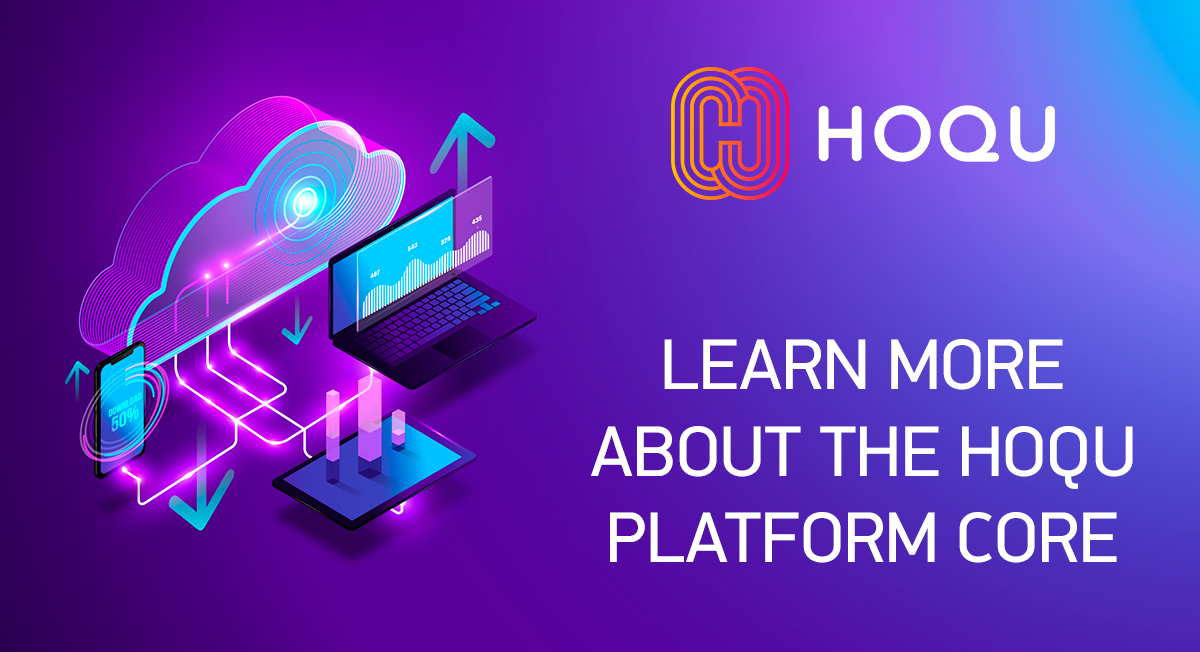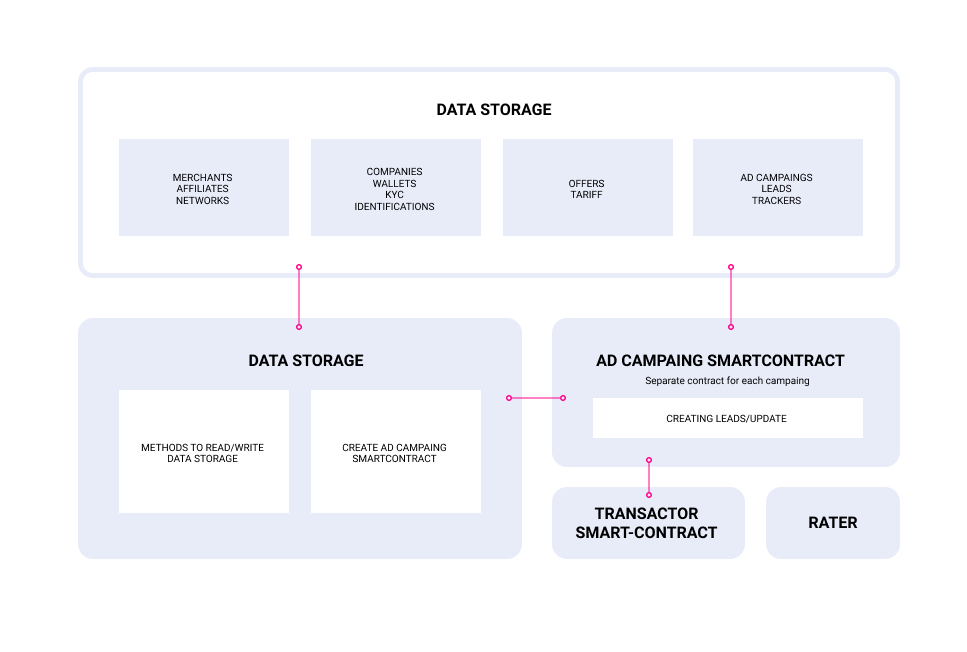The HOQU Project October Digest
Greetings, dear members of the HOQU community!
In this article, we would like to talk about the structure of the HOQU platform, its parts in conjunction with the entire HOQU ecosystem, and take a closer look at the smart contracts of the HOQU platform in details.

The main part of the platform core is the smart contract created for the Ethereum blockchain network. A smart contract is a computer algorithm, an analogue of a contract in real life, which describes and implements the rules of financial relationships between platform participants. Also, the smart contract methods allow users to save and read data from the blockchain.
Recent smart contracts code: https://github.com/hoqu-io/platform/tree/master/contracts
During the platform development, the rinkeby test network is used as a blockchain storage (see https://www.rinkeby.io). Using testnet it is easy to obtain ETH, so the transactions are free of charge. On the release of the production version of the application, the main Ethereum network will be used
The testnet smart contract is available on etherscan: https://rinkeby.etherscan.io/address/0xfc33d77ed4ac8ea48fb347c7ce537a0a6c4fb1b5#code
Platform layout:

The platform’s smart contract is stored on the blockchain. The blockchain API acts as an adapter that uses the Ethereum RPC to access the smart contract methods. As a result, the APP SERVER can get access to the blockchain via the REST protocol.
Reasons for using the adapter:
● It is necessary to prepare the data, because the Ethereum RPC has limited functionality.
● Reducing the number of requests to the blockchain through the use of an intermediate database.
At the moment, we see a platform in the form of 2 main elements:
● Core
● Application Layer (Applications)
Applications can be created by any developers who want to build their CPA platforms. All applications interact with the core of the platform. This forms the HOQU ecosystem:
.png)
In a simplified form, the scheme of a smart contract device looks like this:

The full scheme is available at the link: https://www.lucidchart.com/invitations/accept/b05aa137-e3f1-41e7-916e-47c9700efbb2 or 
HOQU Storage — data storage in the blockchain. All that is stored there is available through Etherscan or the Blockchain Explorer we have developed.
HOQU Platform Smart-Contract — the main smart contract platform. It focuses on:
-The HOQU Transactor Smart-Contract responsible for the implementation of transactions
-The HOQU Token Smart-Contract — the HOQU Token Smart Contract
The HOQU AdCompaign separate Smart-Contract created when an affiliate creates a new advertising campaign. The contract between the affiliate and the merchant. The Blockchain API is responsible for its deployment when a corresponding request is received from the APP layer.
The HOQU Rater is responsible for calculating the rating of participants of the platform.
When making calls to the platform’s smart contract methods, payment using gas occurs from the platform’s wallet, as calls go through our API (and are called from the platform’s wallet)
In smart advertising campaigns, a function is implemented when third-party trackers can add leads and work with them. To achieve this, the smart contracts have a list of tracker addresses allowed for direct work with the leads of this advertising campaign. In this case, the payment for calling the HOQU AdCompaign smart contract methods, and separate Smart Contract will be taken from the tracker’s wallet (from the wallet from which these methods are called).
UML sequence diagram
Users can understand the life cycle of a lead (from the moment it was created on the site to the distribution of tokens for it) from the UML sequence diagrams.
UML sequence diagrams are available at https://www.lucidchart.com/documents/edit/0b42376c-3117-44c6-98c2-fb344cc0f116/0?shared=true&
Here is the screenshot of the UML sequence:

(the life cycle is shown with some assumptions for ease of understanding)
● The network creates an offer for the advertiser;
● The advertiser confirms the offer, while giving an allowance for debiting money from their wallet with a HOQU Transactor Smart-Contract smart contract (more about the allowances below);
● After confirmation of the offer, the affiliates will see it;
● Affiliates create an advertising campaign for this offer and get their affiliate link;
● Using the link, they generate leads, and when a lead appears, the lead appears in the blockchain with the pending status;
● Further, depending on the settings, billing occurs immediately, in this case, the status of the lead changes to done and the advertiser’s HQX is written off and the web and resellers are credited with HQX (intermediaries are defined in the tracker below);
● In the case of deferred charging, they occur either when the hold period expires automatically, or when the lead is accepted in the advertiser’s office, or when automated acceptance is made through the IPA.
Allowances
This is a permission to write off a certain number of tokens from the user’s wallet. It can be given both in the wallets section of the merchants application, and via etherscan https://rinkeby.etherscan.io/address/0xd75f3e1765d4f3479b25bde50320fd164224e977#writeContract
The write-off will occur during the charging of the lead!
At the end of the allowance, the offer pauses. Advertising campaigns are put on pause. The stop of the offer due to the termination of the allowance will adversely affect the advertiser’s rating.
Users can monitor the state of the allowance on the wallets page, and notifications by mail and other communication channels will also be configured.
Notifications about the completion of allowances will also be sent to all affiliates who work with an offer for which the allowance is ending, so that they can stop their campaigns if necessary.
Mediators
What are they?
These are those who participate in the distribution of tokens for the sale of the lead. One of the intermediaries is the platform itself, which takes 0.5% of tokens per transaction.
As a second intermediary, there may be a network. The set of intermediaries depends on the selected tariff and is visible when creating a campaign.
Intermediaries are stored in the lead and are fixed at the time of creation of the lead and are taken from the tariff settings for which the program was created. The fee is unchanged.
The HOQU team continues to develop. A beta version of the application for affiliate networks is planned soon.